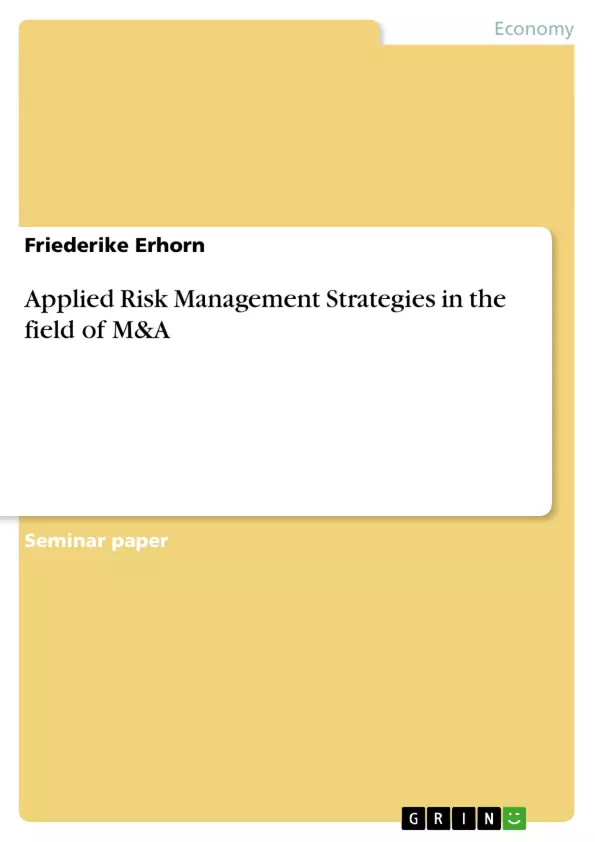Risk minimization and return maximization is what managers, shareholders and even private investors aspire. However, risk and return are highly correlated so that investors have to manage this trade-off. Risk management is thus essential both for investment managers and company executives. Within portfolio management and corporate practice risk can be reduced by diversification.
In the “Risk Management” part Portfolio Theory – particularly Markowitz’ Portfolio Selection – is to be introduced and the most common measures of risk i.e. volatility, covariance, correlation and the beta factor are to be presented.The next section refers to Mergers and Acquisitions and starts with a general intro-duction of the topic. Afterwards, M&A is to be related to diversification as a means of risk minimization. Finally, by the example of ThyssenKrupp, the theoretical assumptions of the first two parts are to be applied.
Inhaltsverzeichnis (Table of Contents)
- Risk Management and M&A
- Risk Management
- Portfolio Theory
- Financial Risk Measures
- Summary
- M&A
- Mergers and Acquisitions in the economic context
- Basic information on Mergers and Acquisitions
- Definitions
- History, Strategy and Motives
- M&A as a means of risk diversification
- Diversification strategies
- Reduction of a company's total risk by international diversification
- Criticism
- M&A and Risk diversification by the example of ThyssenKrupp
- Company description
- Portfolio optimization and M&A strategies
- Expansion of products and international presence
- Applied risk management strategies of ThyssenKrupp
- Conclusion
Zielsetzung und Themenschwerpunkte (Objectives and Key Themes)
This case study aims to analyze the application of risk management strategies within the context of mergers and acquisitions (M&A). It focuses on ThyssenKrupp, a multinational conglomerate, as an exemplary case to illustrate how risk management strategies can be implemented in real-world scenarios.
- Risk management in the context of M&A
- Portfolio theory and its application in M&A
- Diversification strategies as a risk management tool in M&A
- The case study of ThyssenKrupp and its applied risk management strategies
- The impact of M&A on a company's risk profile and growth initiatives
Zusammenfassung der Kapitel (Chapter Summaries)
- Chapter 1 introduces the fundamental concepts of risk management, including portfolio theory and relevant financial risk measures. It lays the theoretical foundation for understanding how risk can be managed in a corporate context.
- Chapter 2 delves into the economic context of mergers and acquisitions, outlining basic information about definitions, history, strategies, and motives. It also explores the potential of M&A as a tool for risk diversification and discusses various diversification strategies, including international diversification.
- Chapter 3 examines the application of risk management strategies in M&A through the case study of ThyssenKrupp. It provides a detailed overview of ThyssenKrupp's company description, portfolio optimization strategies, product expansion, and international presence, highlighting the role of applied risk management in shaping the company's growth initiatives.
Schlüsselwörter (Keywords)
The key terms and focus topics of this case study include: risk management, portfolio theory, financial risk measures, mergers and acquisitions, diversification strategies, international diversification, ThyssenKrupp, company description, portfolio optimization, product expansion, international presence, and applied risk management strategies.
- Quote paper
- Friederike Erhorn (Author), 2006, Applied Risk Management Strategies in the field of M&A, Munich, GRIN Verlag, https://www.grin.com/document/70833



